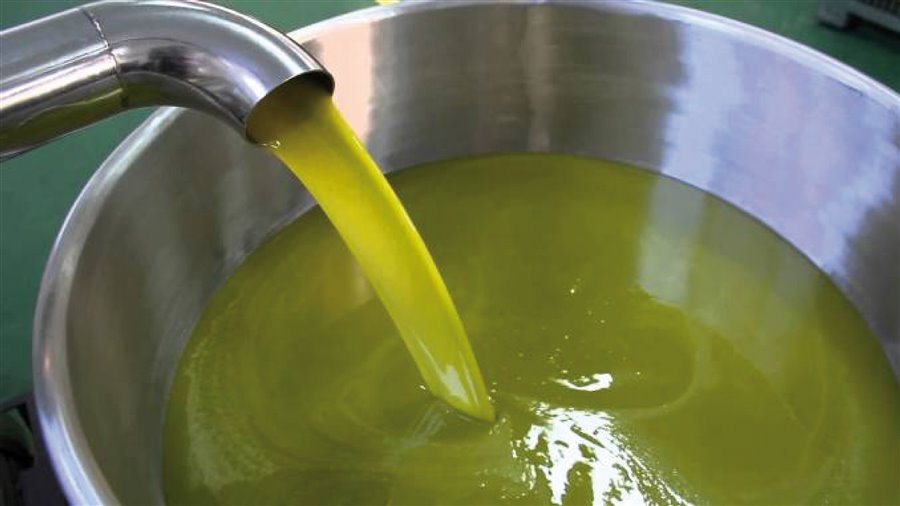In the Bible (Jeremiah, Ecclesiastes, Hosea), the olive tree is a symbol of beauty, justice and knowledge. For us it also has exorcising functions: in the homes of our elders, the blessed olive branch, renewed every year on Palm Sunday, was inevitable at the head of the bed, thaumaturgical protection from every illness.
In the Christian tradition, oil is as sacred as the olive tree that produces it: it is in fact the matter chosen by God as a channel of transferring some of His graces to men, expounding holiness in the Sacraments.
The sacredness of oil transcends its usefulness. Yet oil is also nourishment, it cures sores and wounds, heals diseases, preserves tools and weapons from rust, adorns the limbs, brings light into the darkness; an extraordinary sum of virtues that explain why the olive tree has always been cultivated with particular care.
It is believed to be endemic to the region located between the southern slopes of the Caucasus, the western slopes of the Iranian plateau and the coasts of Syria and Palestine: from there, starting from the fourth millennium BC, it would have gradually spread into Egypt and later into Greece, Sicily, Sardinia, Liguria. It is anyways certain that as early as the first millennium BC, Phoenician, Greek and Etruscan merchants spread perfumed oils and ointments along the Mediterranean coasts: the Pax Romana then contributed decisively to promoting its cultivation, which -after a long period of stagnation following the collapse of the Empire- began vigorously to develop again starting from the year 1000, until a few decades ago, when began the current phase of regression, which now seems irreversible.
The E.V.O. oil is an identity for western Liguria. The civilization of these people is intertwined with this plant.
Starting from 1240, when Benvenuta Ventimiglia paid a day's labor to those who planted an olive tree, continuing with the precious work of the Benedictines who anthropized the area and filled it with olive trees, up until the beginning of the twentieth century, the olive tree has always been the main theme of this civilization.
"... and we were, like an ancient people, in their cathedrals, all our wealth was there, all our strength was there, among the olive trees" (G. Boine).
The olive tree is a plant hard to die: some specimens of Palestine are still alive from the Roman era. Its ability to regenerate from the stump even when the trunk has been cut makes it in fact immortal.
The very shape of the tree seems to be made to overcome adversities; the roots descend for tens of meters, opening their way through the rocks and thus also fulfilling the task of firmly anchoring the plant to the soil of which they preserve hydrogeological stability.
Other roots, secondary and tertiary, develop in the first seventy centimeters of depth, channeling the nourishment of the first layers to the trunk; and the tree may rise, with only apparently capricious contortions - actually responding to precise survival strategies - even up to twenty meters high.
The same adversities produce variations in shape that further increase the charm of the volumes: deep cracks open in its body, the trunk twitches but always gains, often appearing as a sculpture of unrepeatable charm.
The olives are harvested from the first colds of October onwards. They must not be left to ripen too much, nor they should be left to fall on the ground with the risk of getting them bruised. The nets placed under the trees solve the problem today, faced for millennia by the chapped hands of tenacious gatherers.
Immediately transported to the mill, the olives are first washed, then pressed into the millstones where they are reduced to a mush that is placed between discs of vegetable fiber under the press from which the extra virgin olive oil flows.
The real olive oil is therefore a simple fruit juice and, as such, it must be naturally thick and full-bodied.
Do not be fooled by falsely suggestive appearances such as transparency, which actually testifies to exactly the opposite of lightness and quality: the too light and limpid oil is the one industrially treated with chemical additives, while the oil of first pressing is of a color tending almost more to green than to yellow, it has a delicate and sweet but intense aroma, a very fruity, soft, velvety, harmonious flavor, always tending to sweet and to a precious delicate almond scent.
If kept in the dark it retains its organoleptic characteristics for about a year.
This is the extra-virgin olive oil, obtained by mechanical squeezing only, without any chemical manipulation: more digestible than animal fats, less acid than other vegetable oils, it has a chemical composition almost identical to that of breast milk, it is rich in bioregulators that delay senescence and is equipped, among other things, with a golden ratio of vitamin F, vital for the body.
Of course, there are also other types of oil: the commercial name of simple "olive oil", however, refers to a product which is the result of mixing a little quantity of virgin oil with "rectified" olive oil, i.e. the one recovered from the waste of the first pressing and then subjected to various chemical treatments.
In a bottle of extra virgin olive oil there is no manipulation whatsoever. There is simply the sun of our hills and a whole year of hard work carried out with almost religious dedication, with affectionate attention, with a fair pride that has been handed down for centuries: a quality defended by the meticulous tradition of honest "old-fashioned" industriousness which is the best pride of our land.


